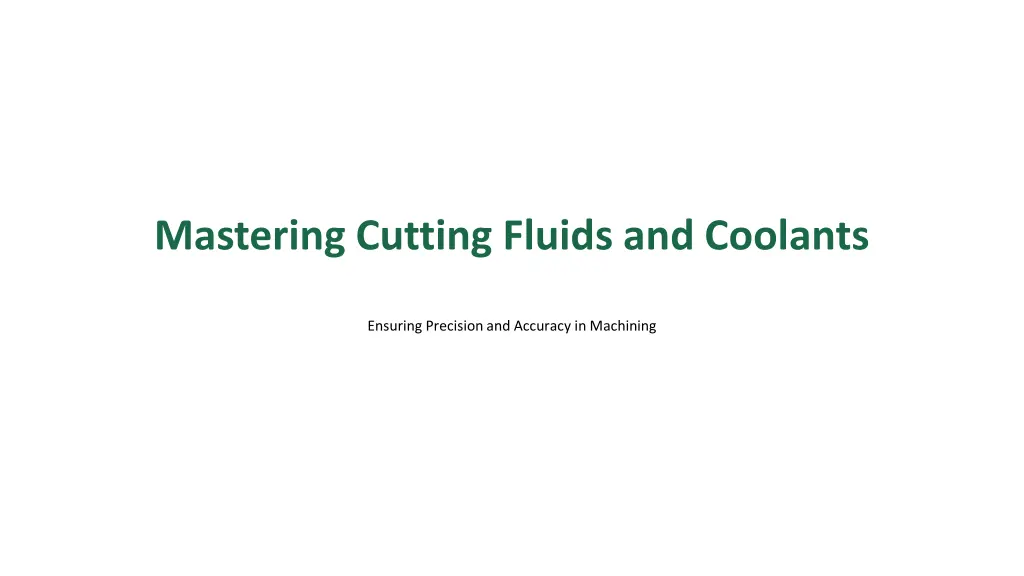
Ensuring Precision in Machining with Cutting Fluids and Coolants
Enhance machining accuracy by understanding the role of cutting fluids and coolants. Learn how these fluids help in cooling, lubrication, and distortion elimination. Explore innovations and best practices for optimal performance in machining processes.
Download Presentation

Please find below an Image/Link to download the presentation.
The content on the website is provided AS IS for your information and personal use only. It may not be sold, licensed, or shared on other websites without obtaining consent from the author. If you encounter any issues during the download, it is possible that the publisher has removed the file from their server.
You are allowed to download the files provided on this website for personal or commercial use, subject to the condition that they are used lawfully. All files are the property of their respective owners.
The content on the website is provided AS IS for your information and personal use only. It may not be sold, licensed, or shared on other websites without obtaining consent from the author.
E N D
Presentation Transcript
Mastering Cutting Fluids and Coolants Ensuring Precision and Accuracy in Machining
01 Introduction to Cutting Fluids Table of Contents 02 Role of Coolants in Machining 03 Distortion Elimination Techniques 04 Innovations in Cutting Fluids 05 Conclusion and Best Practices
1 Introduction to Cutting Fluids Cutting fluids are liquids or gases used in machining to cool and lubricate the cutting tool and workpiece. They reduce friction, prevent overheating,and improve the lifespan of cutting tools. Includes oils, emulsions, pastes, gels, and air or other gases. Essential for maintaining dimensional accuracy and preventingworkpiece distortion. Focus on biodegradable and environmentally friendlyoptions.
2 Role of Coolants in Machining Coolants absorb and dissipate heat generatedduring machining. Reduce friction between the tool and workpiece, enhancingtool life. By controlling temperature, coolants help maintain the shape and size of the workpiece. Water-based, oil-based, synthetic, and semi-synthetic coolants. Choosing the right coolant based on material, machining process, and environmental impact.
3 Distortion Elimination Techniques Distortion occurs due to uneven heating and cooling during machining. Fluids help in even heat distribution,reducing the risk of distortion. Maintainingoptimal temperature to preventmaterial expansion or contraction. Using the right tools to minimize heat generation. Adjusting machining parameters to reduce heat and stress on the workpiece.
4 Innovations in Cutting Fluids Development of eco-friendly cutting fluids to reduce environmental impact. Incorporationof nanoparticles to enhance cooling and lubrication properties. Fluids that adapt to changing machining conditions for optimal performance. Techniques to recycle and reuse cutting fluids, reducingwaste. Adhering to industry standards and regulations for safety and environmental protection.
5 Conclusion and Best Practices Recap of the importance of cutting fluids and coolants in machining. Guidelines for selecting and using cutting fluids effectively. Emerging trends and future developments in cutting fluid technology. Tips for maintaining and handling cutting fluids safely. Open floor for questions and discussions on cutting fluids and coolants.
